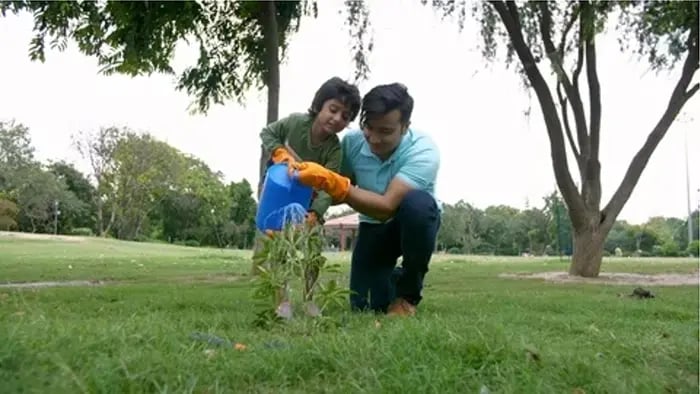- 1. Start with Seeds
- 2. Observe Germination
- 3. Track Growth
- 4. Introduce Flowers
- 5. Watch for Pollination
- 6. Harvest and Examine Seeds
- 7. Incorporate Fun Activities
- 8. Celebrate Growth
Introduction

Teaching kids about plant life cycles through gardening is an exciting and hands-on way to connect with nature. Kids plant a tiny seed, watch it sprout, and care for it as it grows into a beautiful flower or a tasty vegetable. This process is not only fascinating but also incredibly educational.
By getting involved in gardening, kids can learn about the different stages of a plant's life cycle, from seed to sprout, from flower to fruit, and back to seed again. Kids get to see firsthand how plants grow and change over time. This understanding of plant life cycles can deepen appreciation for the environment.
Gardening also offers a chance for kids to develop important skills. They learn responsibility by taking care of plants, patience waiting for them to grow, and a sense of accomplishment when kids see the results of their hard work. Plus, it is a great way for kids to spend time outdoors.
What Is A Plant Life Cycle?

A plant life cycle is the series of stages a plant goes through from the beginning of its life until it starts the cycle again. It starts with a seed, which is planted in the soil. With the right amount of water, sunlight, and nutrients, the seed begins to grow.
First, the seed sprouts, sending a small shoot up through the soil. This stage is called germination. The shoot develops leaves, allowing the plant to make its food through a process called photosynthesis, using sunlight.
As the plant grows, it develops a strong stem and more leaves. Eventually, it will produce flowers. These flowers are important because they can turn into fruits or vegetables. Inside the flowers are pollen and ovules, which help the plant reproduce.
When the flowers are pollinated, they start to produce seeds. These seeds are often found inside fruits or vegetables. Once the fruit is ripe, the seeds can fall to the ground, be eaten by animals, or be planted again, starting the life cycle all over again.
Understanding the plant life cycle helps kids appreciate how plants grow and produce food. It is a fascinating and continuous process that is essential to life on Earth.
Why Understanding The Plant Life Cycle Is Important
Understanding the plant life cycle is crucial because it develops environmental awareness, teaches valuable life skills, and improves scientific knowledge. By learning how plants grow, reproduce, and contribute to ecosystems, kids develop a sense of responsibility to protect the environment.
This hands-on learning experience cultivates patience, responsibility, and problem-solving abilities, while also building a strong foundation in basic biological concepts.
Ultimately, understanding the plant life cycle helps kids connect with nature, inspiring a lifelong love for the outdoors and a commitment to sustainability.
How To Teach Kids About Plant Life Cycles Through Gardening

Teaching kids about plant life cycles through gardening is both fun and educational. Here are some simple steps to guide parents:
1. Start with Seeds
Begin by choosing easy-to-grow seeds like sunflowers, beans, or marigolds. Explain that each seed contains everything needed to start a new plant. Let kids plant the seeds in small pots or a garden bed, and discuss what seeds need to grow: soil, water, and sunlight.
2. Observe Germination
Encourage kids to water seeds regularly and place it in a sunny spot. Have kids observe and record changes daily. When the seeds sprout, explain germination and how the tiny shoot will grow into a plant.
3. Track Growth
As the plants grow, they teach kids about the importance of leaves and stems. Explain how leaves use sunlight to make food for the plant through photosynthesis. Have kids measure the plants and note new leaves and branches.
4. Introduce Flowers
When the plants start to flower, discuss the role of flowers in the plant's life cycle. Explain how flowers attract pollinators like bees and butterflies, which help the plant reproduce.
5. Watch for Pollination
If possible, show kids examples of pollinators at work. Discuss how pollen is transferred from one flower to another, leading to the development of fruits and seeds.
6. Harvest and Examine Seeds
Once the plants produce fruits or seeds, explain how these are the next generation of plants. Let kids help with harvesting and examining the seeds inside fruits or pods. Discuss how these seeds can be planted to start the cycle again.
7. Incorporate Fun Activities
Make learning engaging with activities like drawing the plant life cycle, making seed collages, or creating a plant journal. You can also do simple experiments, like comparing plants grown in different conditions.
8. Celebrate Growth
Celebrate the milestones in the plants' life cycles. When a plant flowers or produces fruit, it is a special moment. Praise the kids for care and patience, reinforcing the rewards of the hard work.
Conclusion

Teaching kids about plant life cycles through gardening is a rewarding and educational experience. It creates a love for nature, teaches responsibility, and provides hands-on learning. By engaging in gardening, kids gain valuable knowledge and skills while having fun, ultimately developing a deeper connection with the environment.
Her love for storytelling began with reading her grandfather’s speeches, where Tarishi saw the power of words in creating lasting memories. Combining her passions for food and writing, she has turned her life into a fulfilling path of sharing stories that celebrate flavours and how food brings communities together.
The views expressed are that of the expert alone.
The information provided in this content is for informational purposes only and should not be considered a substitute for professional medical advice, diagnosis, or treatment. Always seek the advice of your physician or another qualified healthcare provider before making any significant changes to your diet, exercise, or medication routines.
References
https://thehomeschoolscientist.com/life-cycle-of-a-plant-lesson-printables/
https://extension.psu.edu/plant-life-cycles
https://galvbay.org/wp-content/uploads/2019/10/Plant-Life-Cycle.pdf
















